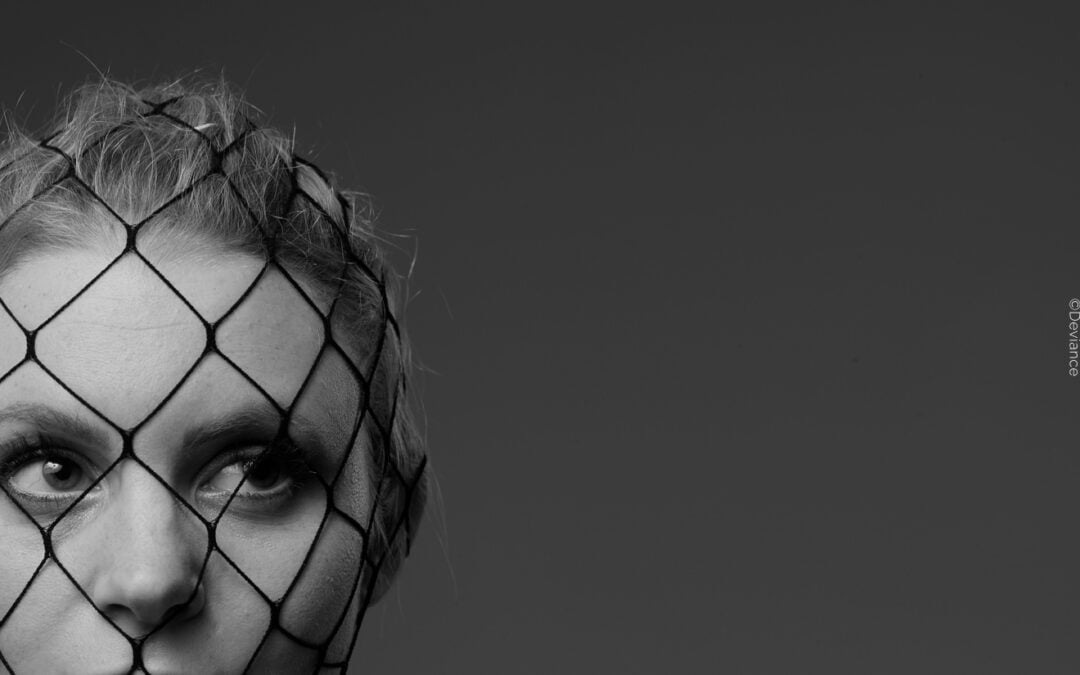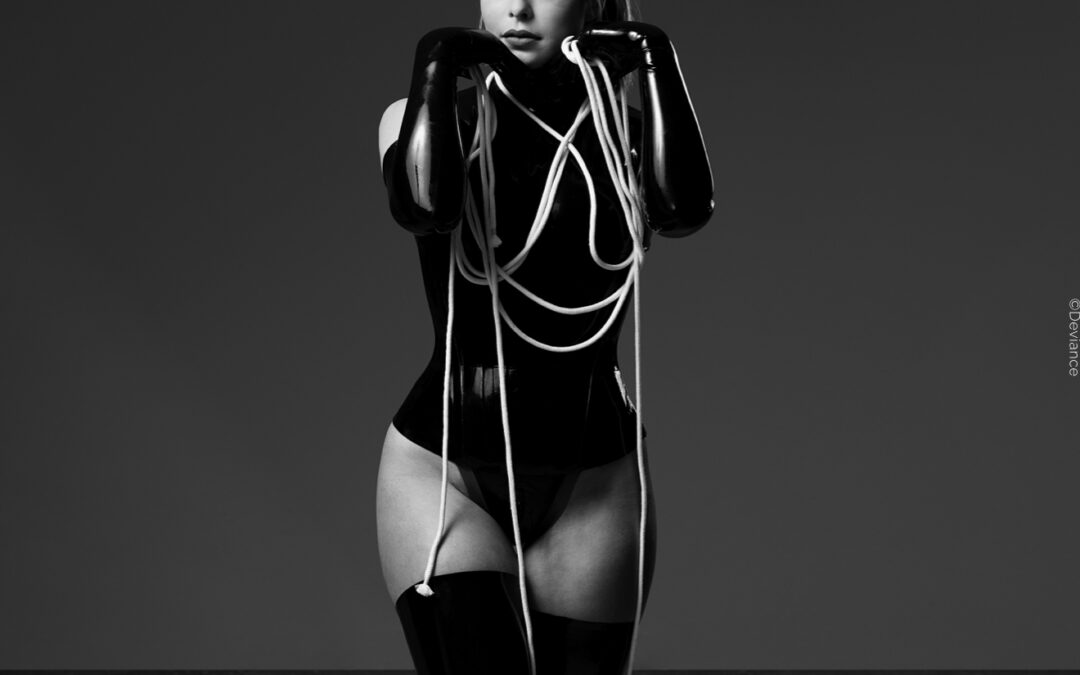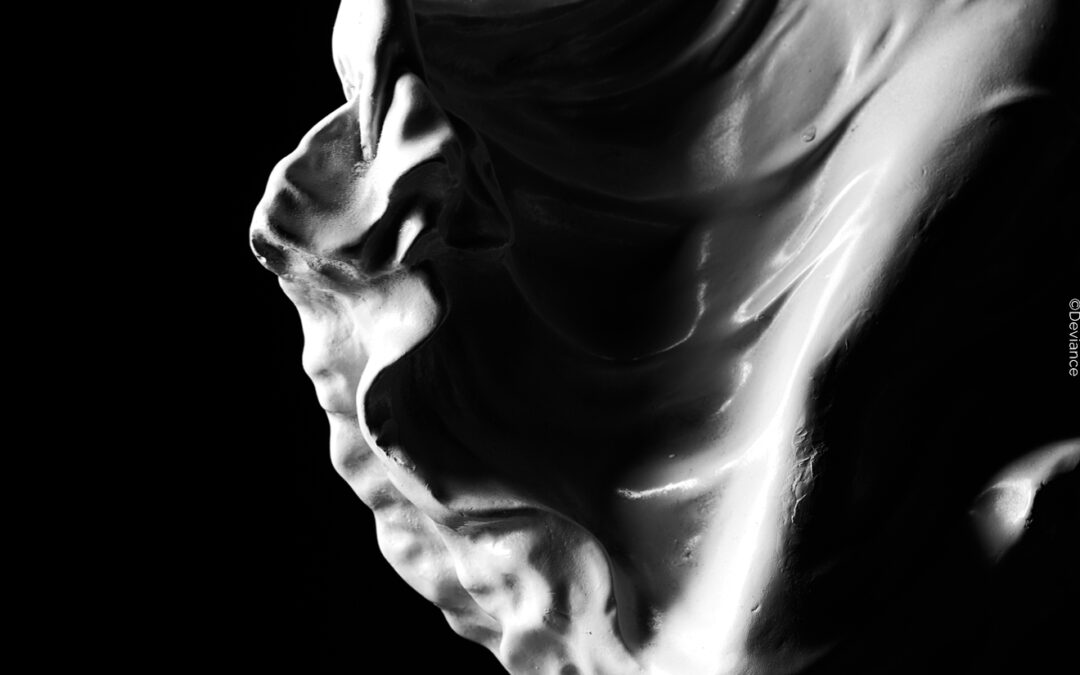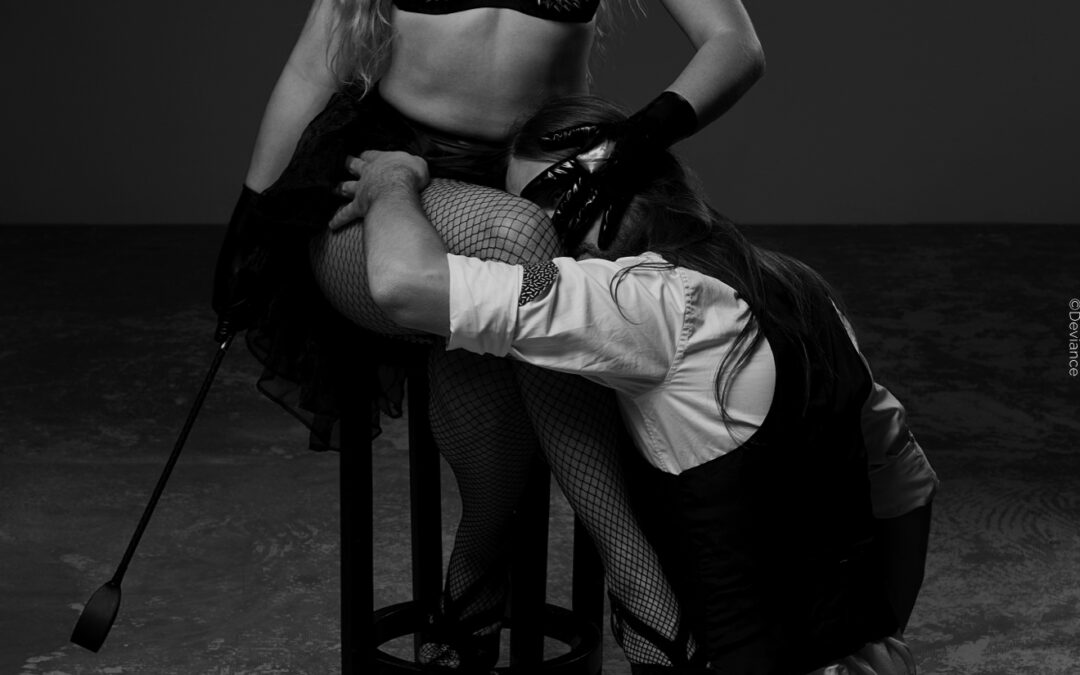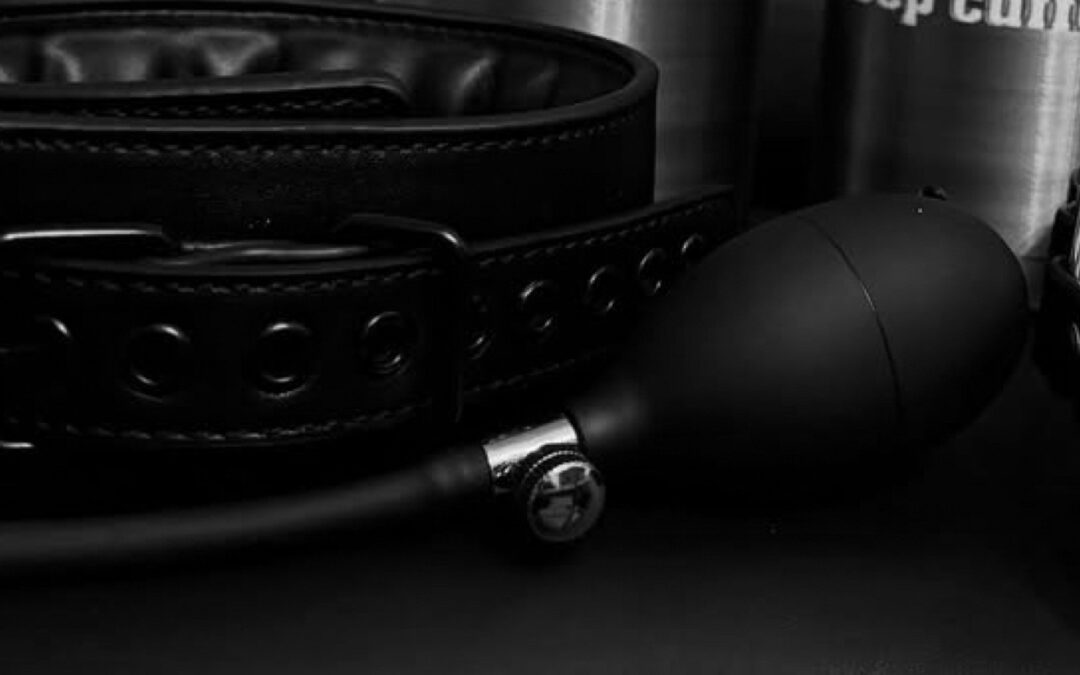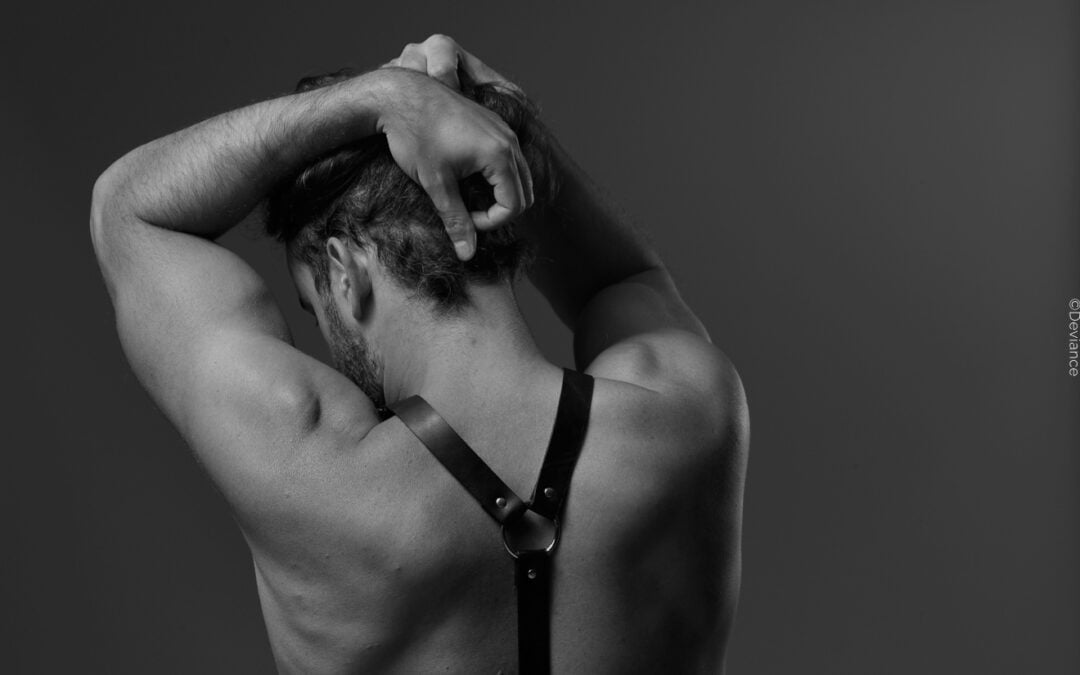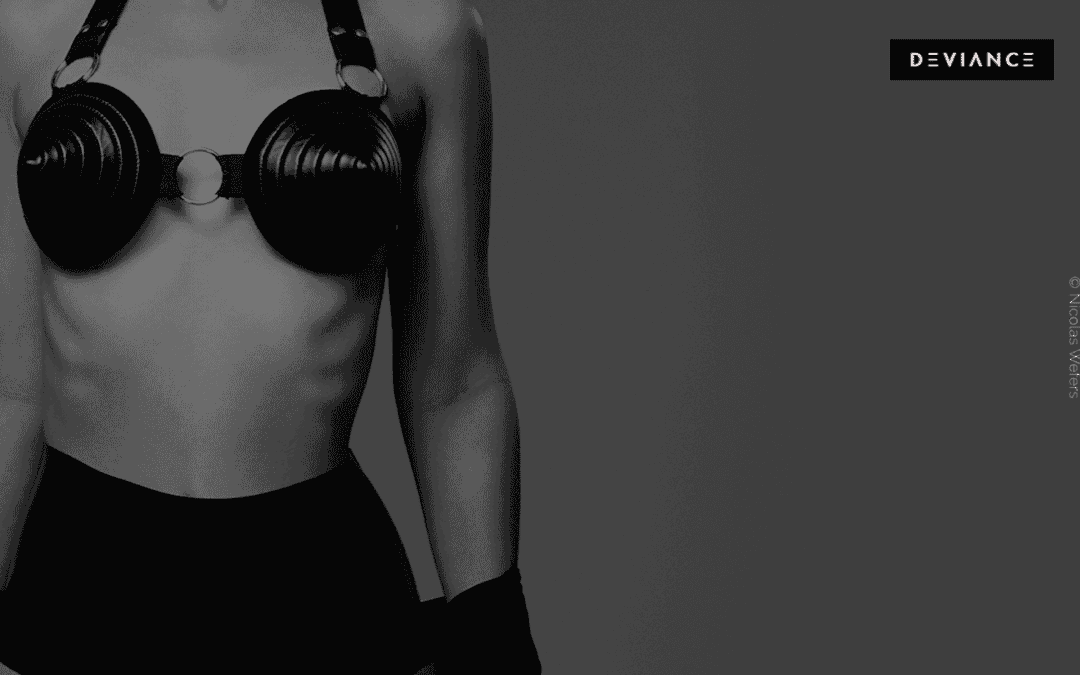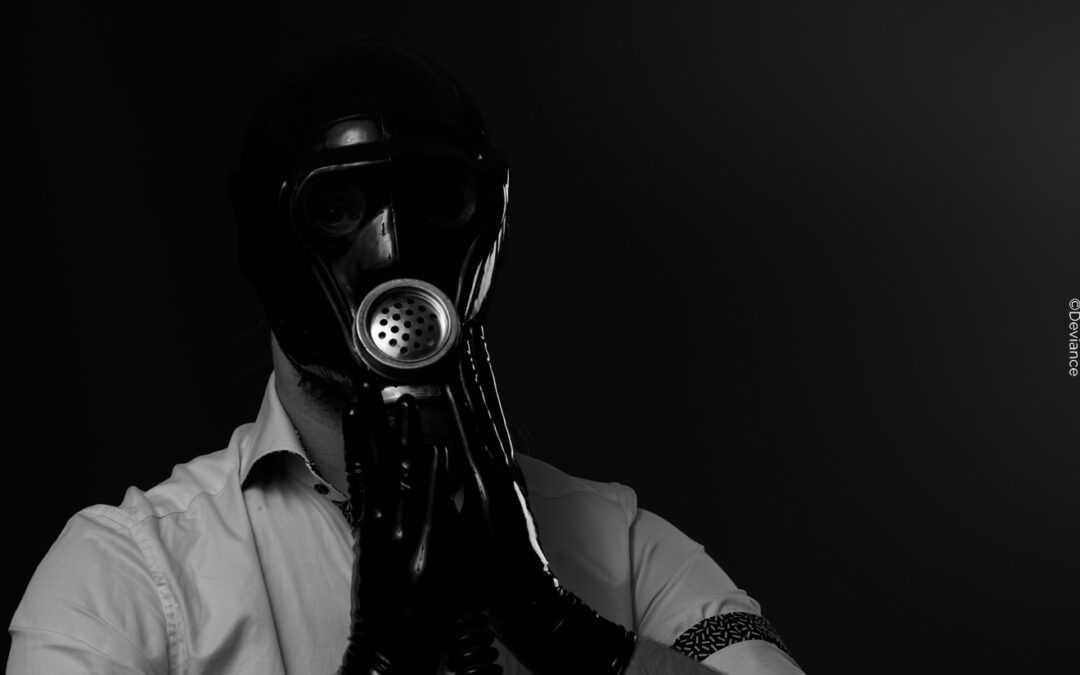They have existed and continue to exist: the striking intersections between fetish and fashion. Often, elements we recognize from the BDSM or fetish world can be found in fashion. So one might ask: Which came first? Did designers take inspiration from fetishes and BDSM accessories? Or did Kinksters first designate certain fashion trends as fetishes?
The history of erotic fashion
Sex and fashion have been linked since time immemorial. There are signs of this even in the earliest traditions of humanity. Throughout all eras, people dressed according to the respective ideal of beauty and, above all, with a corresponding effect on their sexual partners. Female sexual characteristics in particular were deliberately emphasized. Even marital status was expressed through certain items of clothing.
There have always been extreme forms of expression: Geishas tied their feet so that they appeared particularly delicate. They wore extreme makeup and hairstyles. In the Victorian era, women in Europe cultivated wasp waists with unnaturally tight corsets. It is obvious that over time sexual inclinations also found expression in fashion.
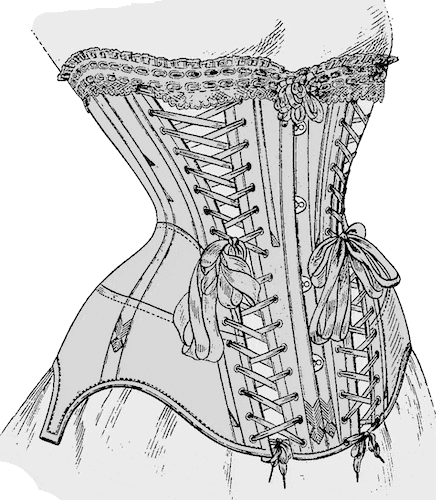
Corset from 1907, US patent
Source: Wikimedia Commons
After corsets were increasingly replaced by girdles and brassieres in the 20s and 30s, corsets remained primarily for erotic purposes. It was also at this time that the first pornographic photographs appeared showing people in black leather engaging in S&M activities.
Overemphasis on female forms and lacing become popular
n the 40s the first platform heels saw the light of day, as did cone-shaped pointed bras. At this time, the fashion house Dior also developed the “New Look”, bringing back, among other things, the wasp-waist bodice and combining it with stiletto heels and the aforementioned pointed bras. And men weren’t left out either: in the post-war period, the leather jacket not only made Marlon Brando a star, but also paved the way for leather culture.
Things got really exciting in the 1960s. In “The Avengers” agent Emma Peel portrayed a self-confident, dominant-looking woman who underlined her impact with leather catsuits and over-the-knee boots.
During the same decade, sex magazines began selling fetish photography, companies manufactured rubber and leather clothing, and mail order catalogs began offering more specialized undergarments like posing straps and diaper pants. The first designers such as Yves Saint Laurent and Mary Quant also began to integrate fetish elements such as lacing, leather and wet look into their collections.
In the 70s, both homosexuality and sadomasochism gained more acceptance, along with leather. Designers like Vivienne Westwood and Karl Lagerfeld increasingly drew inspiration from subcultures such as the emerging punk movement, which incorporated dangerous-looking elements like spiked and dog collars, chains, fishnet stockings, corsets, and rubber into their outfits.
But the first department stores soon began to offer clothing and accessories inspired by the fetish world made of leather or with rivets and corset lacing. Westwood even designed a shop in the style of an S&M boutique and even offered bondage equipment there.
In the same decade, the world’s most sought-after fashion photographer, Helmut Newton, earned a reputation as a provocateur and king of kink through his black-and-white, erotically charged images, often with sadomasochistic and fetish subtexts. His penchant for what was considered immoral at the time and his revealing, provocative depictions of not only women’s bodies divided opinions – and inspired the fashion world.
In the 1980s, the gothic scene in the western world took up punk elements such as leather, corsages and fishnets and these have been indispensable ever since. At the same time, the latter’s style continued to spread; black and leather could be found everywhere and were considered avantgarde.
More and more designers and pop culture stars integrated these elements to polarize. Jean Paul Gaultier designed his corsets with pointed breasts and patent leather ensembles, which are still characteristic today. In 1990, he designed Madonna’s famous cone bra corsage, with cone-shaped cups, which she wore during her “Blonde Ambition” tour.
When Gianni Versace presented his bondage collection in 1992, Fetishists worldwide complained that the collection had brought fetish into the fashion mainstream. In the same year, fashion magazine Vogue reported that many of the world’s hottest designers drew inspiration from the field of “sexual perversion.” It was also Versace who played a large part in the homoeroticization of men’s fashion.
In fact, fetish fashion came into the spotlight, was noticed by a larger target group and spread – regardless of the actual inclinations of the consumers. Other designers, such as Alexander McQueen and Thierry Mugler, also repeatedly took up the trend in their work to attract public attention. The latter even designed an underwear collection made of leather, metal and latex.
Fashion loves Fetish – On the trail at the bargain table
Initially, materials such as leather, paint and rubber caused scandals. Nevertheless, no designer could get past you. Because fashion is based on creativity and courage. Trends often emerged from the visual preferences of a particular scene. Fashion makers then brought these from the fringes of society onto the catwalks. In doing so, they made respectable what had previously been taboo.
Today, fetish fashion has merged with fashion trends. Virtually every fashion label uses materials and elements familiar from the BDSM scene. Thigh-high over-the-knee boots are no longer reserved just for Dominatrices. Wet look and leather are even office-appropriate. Lacing, studs, and straps are part of almost every designer’s repertoire. Chokers are close relatives of the collars popular in the community and are a trend that Subs like to use for everyday wear. Almost every lingerie chain now offers lingerie with harness elements. Once a functional gear for BDSM enthusiasts, this trend has now become an indispensable part of fashion in a more subdued form.
Justify Fetish Fashion
Elements such as latex, leather and harnesses are not only found on catwalks. Pop stars have also had a decisive influence on the development of fashion with their outfits on stages, red carpets and in music videos.
As early as 1990, when sadomasochism and voyeurism were still taboo, at least in the mainstream, Madonna caused a stir around the world – once again – with her scandalous video for “Justify my Love”, and two years later with the video for Erotica. Her provocative message was: SM is not taboo and everyone is allowed to live out his or her sexuality openly.
George Michael also repeatedly played with SM elements. The best known is the video for his song “Freeek” from 2002, which plays with an impressive fantasy world of latex, cyberpunk and submission.
Other well-known examples from recent times include Rihanna and Lady Gaga. In her video for the telling song “S&M,” Rihanna appears in colorful latex outfits, while Lady Gaga dons a latex nun costume in “Alejandro,” dresses her dancers in uniforms, but otherwise prefers corsets, classic black, and plenty of chains.
But even outside of their music videos, both of them can’t keep their hands off latex and harnesses, it seems, and they also regularly appear in provocative outfits on photographs and red carpets.
The list of examples from the pop world as well as songs that deal with BDSM and fetishes can be continued endlessly. But let’s think back to the question from the beginning, whether the chicken or the egg came first: Both are probably true. Fetish and fashion have influenced each other and still do today. In the end, both benefit from it. Designers draw creativity from the multifaceted world of BDSM. And kinksters can show their inner self through fashion.
